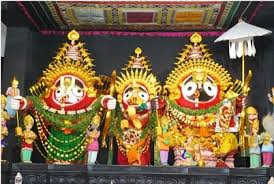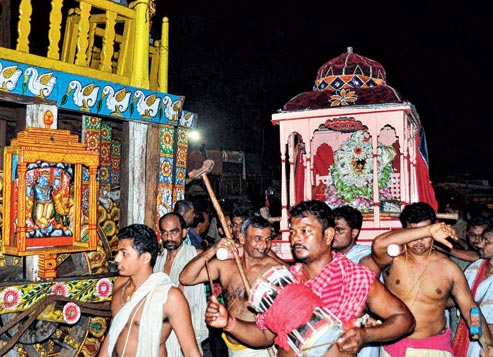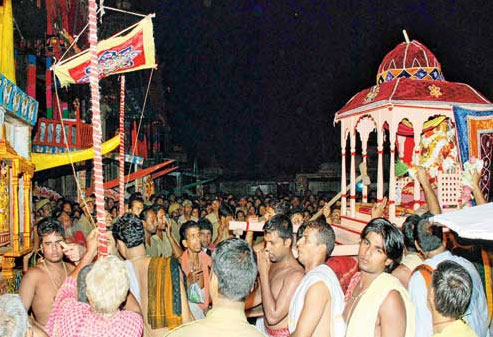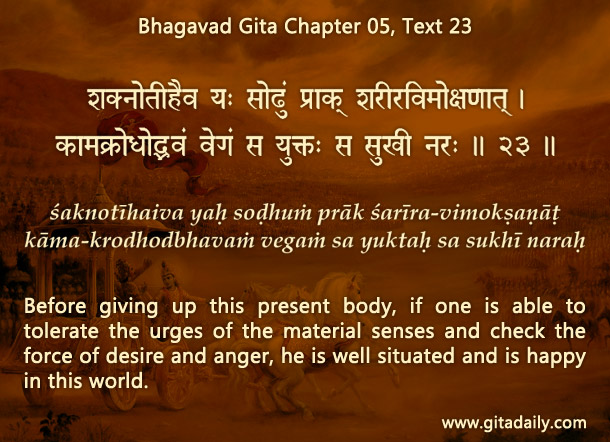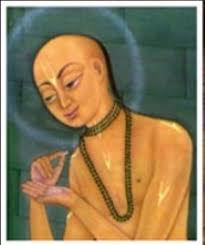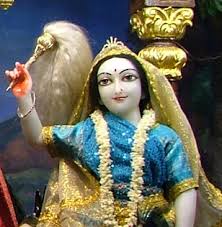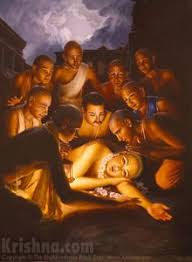Hare Krishna!
Please accept our humble obeisances!
All glories to Srila Prabhupada!
All glories to Sri Guru and Sri Gauranga!
Our 36th month Srimad Bhagavatam Katha (Virtual multimedia class) will cover the pastimes of Maharaj Prthu.
Maharaj Prthu's pastimes that can be found in the 4th canto across 11 chapters and at least in 450 verses (SB 4.13 to 4.23- 450 verses)
Topic: The pastimes of Maharaj Prthu- part 2 - SB 4.15- 4.18 (121 verses)
Date: 27th June 2020 (Saturday)
Time: 4 pm to 6 pm
Link to join the class from your desktop or laptop:https://us02web.zoom.us/j/9150790510?pwd=Wk5GYXVRMkJmdk84MzZJRXBKYUgwUT09If you click this link from your cell phone or IPAD etc, you will have to download the Zoom application (less than a minute to download)
Who is King PrthuUnlike today's leaders, Maharaja Prthu considered it his primary duty to enlighten the citizens with spiritual knowledge. He knew that any leader who simply exacts taxes from the people, but does not inform them of the mission of human life, is thoroughly condemned.
Benedictions for hearing Maharaj Prthu's pastimesSB 4.17.6: Pṛthu Mahārāja was a powerful incarnation of Lord Kṛṣṇa's potencies; consequently any narration concerning his activities is surely very pleasing to hear, and it produces all good fortune.
SB 4.23.31: Any person who describes the great characteristics of King Pṛthu with faith and determination — whether he reads or hears of them himself or helps others to hear of them — is certain to attain the very planet which Mahārāja Pṛthu attained. In other words, such a person also returns home to the Vaikuṇṭha planets, back to Godhead.
SB 4.23.32: If one hears of the characteristics of Pṛthu Mahārāja and is a brāhmaṇa, he becomes perfectly qualified with brahminical powers; if he is a kṣatriya, he becomes a king of the world; if he is a vaiśya, he becomes a master of other vaiśyas and many animals; and if he is a śūdra, he becomes the topmost devotee.
SB 4.23.33: It does not matter whether one is a man or woman. Anyone who, with great respect, hears this narration of Mahārāja Pṛthu will become the parent of many children if without children, and will become the richest if without money.
SB 4.23.34: Also, one who hears this narration three times will become very reputable if he is not recognized in society, and he will become a great scholar if he is illiterate. In other words, hearing of the narrations of Pṛthu Mahārāja is so auspicious that it drives away all bad luck.
SB 4.23.35: By hearing the narration of Pṛthu Mahārāja, one can become great, increase his duration of life, gain promotion to the heavenly planets and counteract the contaminations of this Age of Kali. In addition, one can promote the causes of religion, economic development, sense gratification and liberation. Therefore from all sides it is advisable for a materialistic person who is interested in such things to read and hear the narrations of the life and character of Pṛthu Mahārāja.
SB 4.23.36: If a king, who is desirous of attaining victory and ruling power, chants the narration of Pṛthu Mahārāja three times before going forth on his chariot, all subordinate kings will automatically render all kinds of taxes unto him — as they rendered them unto Mahārāja Pṛthu — simply upon his order.
SB 4.23.37: A pure devotee who is executing the different processes of devotional service may be situated in the transcendental position, being completely absorbed in Kṛṣṇa consciousness, but even he, while discharging devotional service, must hear, read and induce others to hear about the character and life of Pṛthu Mahārāja.
SB 4.23.38: The great sage Maitreya continued: My dear Vidura, I have as far as possible spoken the narrations about Pṛthu Mahārāja, which enrich one’s devotional attitude. Whoever takes advantage of these benefits also goes back home, back to Godhead, like Mahārāja Pṛthu.
SB 4.23.39: Whoever, with great reverence and adoration, regularly reads, chants and describes the history of Mahārāja Pṛthu’s activities will certainly increase unflinching faith and attraction for the lotus feet of the Lord. The Lord’s lotus feet are the boat by which one can cross the ocean of nescience.
ISKCON Scarborough
3500 McNicoll Avenue, Unit #3,
Scarborough, Ontario,
Canada, M1V4C7
Website: www.iskconscarborough.org
Email:
iskconscarborough@hotmail.com
scarboroughiskcon@gmail.com


